Liz Hamson gained a preview of the United Co-op/Unilever Perfect Store
And why stop at the physical store layout, asks Beetlestone: “What’s stopping us looking at internet shopping - recreating a much more believable and interesting store to shop online?”
Now that truly would be a perfect store.
When you picture perfection, what do you see? Brad Pitt? Angelina Jolie? Bradwell Co-op? Unlike the majority of the population who plump for the Hollywood stars when asked to name images of perfection, United Co-operatives and Unilever UK Foods have rather a different ideal. And the Bradwell store in Stoke-on-Trent in Staffordshire is it.
At the moment, Perfect Store, as the project is known, exists only in the virtual world, but the plan is to translate it into reality at Bradwell. The store has been the subject of a groundbreaking collaboration to deconstruct a convenience store and then put it back together - on the basis of how customers actually shop.
This November, its doors will open to reveal the results of that collaboration, thought to be the first to take place at a whole store rather than individual category level. If it comes off, and we will be tracking progress, it could provide the blueprint for every store in United’s estate.
Perfect Store was born out of Unilever’s Partners for Growth programme. In 2003, the company conducted consumer research into shopping missions in c-stores, revealing that 67% of shoppers used convenience stores for complementary shopping and that the key missions were newsagent, top up, food for now and need it now. It was clear the average store layout was not conducive to meeting those needs. So Unilever approached United Co-op with a view to working together to find something that did.
Suzy Ford, category strategy manager, Unilever UK Foods, says their joint mission was to ask: “What is the perfect store layout, offer and service in order to match consumer expectations and behaviour?”
First a store had to be selected. Bradwell was chosen because it was a typical c-store, located in a parade of shops close to an estate and opposite a school. Its staff “were open to change”, adds Susan Beetlestone, United Co-op general manager - marketing.
Retail design and consumer research company ID Magasin was then brought in to film shoppers and to conduct exit interviews to compare actual and perceived behaviour.
The results were startling. Bradwell overtraded in need it now, newsagent, treats, main shop, gifting and deals, but it under-traded in top up, food for now and meal for tonight items.
An analysis of the store layout gave some clues as to why. It showed that while 69% of shoppers walked down the first aisle of the store, 20% turned right as soon as they arrived at the break in the aisle (see top right). The chilled fixture, which was just beyond the break, was unsurprisingly one of the areas undertrading. Beetlestone says: “Half of all our customers that went through the store didn’t walk past the meal for tonight offer. It highlighted a huge opportunity we were missing.
“More worryingly, the second-hottest area as far as footfall went was the break in the run, but they were not actually shopping those gondola ends.”
While, unsurprisingly, the area by the checkouts was one of the store’s hot spots in terms of footfall, the area immediately to the right of the entrance, where chilled snacks and drinks were located, was a cool area: people either turned left into the shop or walked straight to the tills to make a quick purchase. “It was quite shocking,” admits Beetlestone. “It was due to the layout. Beers, wines and spirits were another cool spot. It opened our eyes."
Taking the research, ID Magasin put together a hypothetical layout of the perfect store.Then The Fifth Dimension, which specialises in virtual consumer research and space management, created two virtual stores - one replicating the existing store and one creating the ideal store.
Ford explains: “Redevelopment can be really expensive. If we have a mechanic that allows us to test in a virtual environment, we have a really cost-effective tool.”
In the new-look store, the gap in the first aisle was closed; chilled snacks and drinks moved to the back right hand corner to form a more coherent food to go area; promotions were relocated to mid aisle rather than gondola ends so that people walked towards them rather than past them; and some of the dump bins and stacks were ditched.
No detail was spared in creating the virtual environments. All 3,300 products were scanned back and front. PoS was replicated. Details down to the cracks in the paving stones outside the store were included.
The next step was to compare how customers shopped the stores. Five hundred shoppers were invited to sit at computers in a room at the rear of the store and shop the two formats. The team then checked that ID Magasin’s data tallied with that from the virtual control store. The results of the study are still being collated, but the early signs are that, despite the artificial nature of the virtual shopping trips, the findings are comparable.
Ford says: “Shoppers in the virtual environment mimicked the behaviour of those who were filmed - so the data has been validated. Those who took part in seven subsequent focus groups (six people in each) said they preferred Perfect Store by some margin. They found it much easier to shop because categories had much more logical groupings. They liked the fact that there weren’t so many dump bins and stacks. Only one person in one group said they preferred the control.”
Of course this is the virtual world. The real test is whether the perfect store works in the real world. The store is now being refurbished. Once complete, the cameras will be let back in. No one is expecting the results to exactly mirror those in the virtual study. But United’s managers are already making changes ahead of any wide-scale implementation, introducing promotional baskets in hot spots, for instance.
If it is a success, United and Unilever will roll out Perfect Store to a further 10 stores next year. They will then look more closely at individual categories with a view to the overhauling of layouts across United Co-operatives’ entire estate.
Both are optimistic. Tony Smith, sales director, Unilever UK Foods, says: “We’ve recognised the importance of separating the transactional aspect of relationship with customers from the transformational. Perfect Store concept has resulted from a major investment by Unilever in broadening our category management capability within small store formats. I truly believe the work is groundbreaking and has the capacity to reveal significant new opportunities for retailers and manufacturers alike.”
And why stop at the physical store layout, asks Beetlestone: “What’s stopping us looking at internet shopping - recreating a much more believable and interesting store to shop online?”
Now that truly would be a perfect store.
When you picture perfection, what do you see? Brad Pitt? Angelina Jolie? Bradwell Co-op? Unlike the majority of the population who plump for the Hollywood stars when asked to name images of perfection, United Co-operatives and Unilever UK Foods have rather a different ideal. And the Bradwell store in Stoke-on-Trent in Staffordshire is it.
At the moment, Perfect Store, as the project is known, exists only in the virtual world, but the plan is to translate it into reality at Bradwell. The store has been the subject of a groundbreaking collaboration to deconstruct a convenience store and then put it back together - on the basis of how customers actually shop.
This November, its doors will open to reveal the results of that collaboration, thought to be the first to take place at a whole store rather than individual category level. If it comes off, and we will be tracking progress, it could provide the blueprint for every store in United’s estate.
Perfect Store was born out of Unilever’s Partners for Growth programme. In 2003, the company conducted consumer research into shopping missions in c-stores, revealing that 67% of shoppers used convenience stores for complementary shopping and that the key missions were newsagent, top up, food for now and need it now. It was clear the average store layout was not conducive to meeting those needs. So Unilever approached United Co-op with a view to working together to find something that did.
Suzy Ford, category strategy manager, Unilever UK Foods, says their joint mission was to ask: “What is the perfect store layout, offer and service in order to match consumer expectations and behaviour?”
First a store had to be selected. Bradwell was chosen because it was a typical c-store, located in a parade of shops close to an estate and opposite a school. Its staff “were open to change”, adds Susan Beetlestone, United Co-op general manager - marketing.
Retail design and consumer research company ID Magasin was then brought in to film shoppers and to conduct exit interviews to compare actual and perceived behaviour.
The results were startling. Bradwell overtraded in need it now, newsagent, treats, main shop, gifting and deals, but it under-traded in top up, food for now and meal for tonight items.
An analysis of the store layout gave some clues as to why. It showed that while 69% of shoppers walked down the first aisle of the store, 20% turned right as soon as they arrived at the break in the aisle (see top right). The chilled fixture, which was just beyond the break, was unsurprisingly one of the areas undertrading. Beetlestone says: “Half of all our customers that went through the store didn’t walk past the meal for tonight offer. It highlighted a huge opportunity we were missing.
“More worryingly, the second-hottest area as far as footfall went was the break in the run, but they were not actually shopping those gondola ends.”
While, unsurprisingly, the area by the checkouts was one of the store’s hot spots in terms of footfall, the area immediately to the right of the entrance, where chilled snacks and drinks were located, was a cool area: people either turned left into the shop or walked straight to the tills to make a quick purchase. “It was quite shocking,” admits Beetlestone. “It was due to the layout. Beers, wines and spirits were another cool spot. It opened our eyes."
Taking the research, ID Magasin put together a hypothetical layout of the perfect store.Then The Fifth Dimension, which specialises in virtual consumer research and space management, created two virtual stores - one replicating the existing store and one creating the ideal store.
Ford explains: “Redevelopment can be really expensive. If we have a mechanic that allows us to test in a virtual environment, we have a really cost-effective tool.”
In the new-look store, the gap in the first aisle was closed; chilled snacks and drinks moved to the back right hand corner to form a more coherent food to go area; promotions were relocated to mid aisle rather than gondola ends so that people walked towards them rather than past them; and some of the dump bins and stacks were ditched.
No detail was spared in creating the virtual environments. All 3,300 products were scanned back and front. PoS was replicated. Details down to the cracks in the paving stones outside the store were included.
The next step was to compare how customers shopped the stores. Five hundred shoppers were invited to sit at computers in a room at the rear of the store and shop the two formats. The team then checked that ID Magasin’s data tallied with that from the virtual control store. The results of the study are still being collated, but the early signs are that, despite the artificial nature of the virtual shopping trips, the findings are comparable.
Ford says: “Shoppers in the virtual environment mimicked the behaviour of those who were filmed - so the data has been validated. Those who took part in seven subsequent focus groups (six people in each) said they preferred Perfect Store by some margin. They found it much easier to shop because categories had much more logical groupings. They liked the fact that there weren’t so many dump bins and stacks. Only one person in one group said they preferred the control.”
Of course this is the virtual world. The real test is whether the perfect store works in the real world. The store is now being refurbished. Once complete, the cameras will be let back in. No one is expecting the results to exactly mirror those in the virtual study. But United’s managers are already making changes ahead of any wide-scale implementation, introducing promotional baskets in hot spots, for instance.
If it is a success, United and Unilever will roll out Perfect Store to a further 10 stores next year. They will then look more closely at individual categories with a view to the overhauling of layouts across United Co-operatives’ entire estate.
Both are optimistic. Tony Smith, sales director, Unilever UK Foods, says: “We’ve recognised the importance of separating the transactional aspect of relationship with customers from the transformational. Perfect Store concept has resulted from a major investment by Unilever in broadening our category management capability within small store formats. I truly believe the work is groundbreaking and has the capacity to reveal significant new opportunities for retailers and manufacturers alike.”








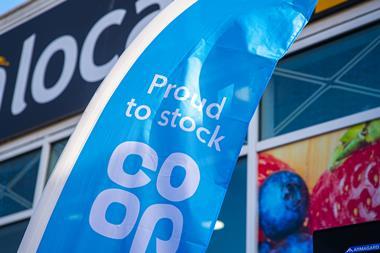
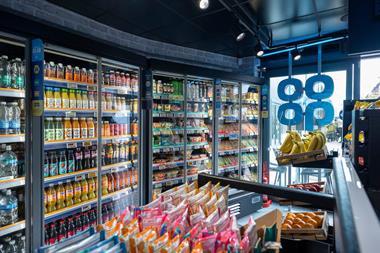
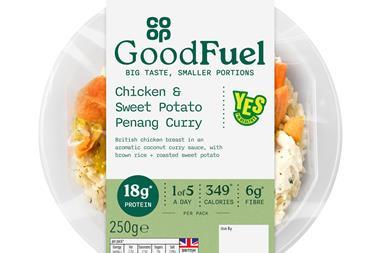
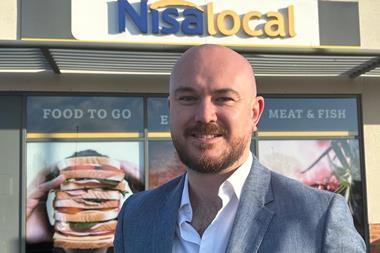





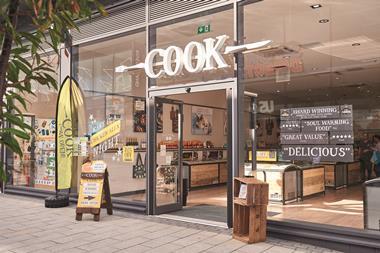

No comments yet